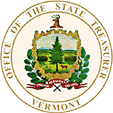Georgetown University's Center for Retirement Initiatives recently featured a blog by Treasurer Beth Pearce describing Vermont's approach to creating the Green Mountain Secure Retirement Plan. Text of the blog is below. You can visit the Center for Retirement Initiatives website to view it here.
On June 8, 2017, Vermont became the first state in the nation to establish a state-facilitated multiple employer plan (MEP) with the signing of S. 135, establishing the Green Mountain Secure Retirement Plan. This effort was a culmination of three years of study and three reports by the Vermont Public Retirement Study Committee, whose comprehensive report in January of this year recommended this structure for the plan. We are excited to move forward and intend to implement the plan by 2019 pursuant to the bill and consistent with federal laws and regulations.
The issue of retirement security has been a long-term concern of the Treasurer’s office. The process first began in 2006 with a New England Legislative Symposium, where my predecessor and I made a recommendation for a voluntary retirement savings option sponsored by the state of Vermont at no taxpayer cost that would be available to employers, employees, and to self-employed individuals. Although we had significant support, we ultimately did not achieve passage at the time, but did raise awareness of the need. Most importantly, we were able to start a dialogue with the private sector and retirement firms, which I think is the root of our success today.
While Vermont has many large well-recognized companies, small businesses are essential to our economy and account for the majority of businesses in Vermont. However, our employees have very limited opportunities for access to employer-sponsored plans and a lack of retirement savings will place additional strain on state and federal government assistance programs. AARP reports that 45 percent, or 104,000 of Vermont’s private sector employees, work for an employer that does not offer a retirement plan. Workers in Vermont in businesses with fewer than 100 employees are less likely to have access to a plan (61 percent) than workers in larger businesses (29 percent). Significant numbers of workers at all levels of earnings and education do not have the ability to use a payroll deduction plan to save for retirement.
Guiding Principles
Unfortunately, the situation for workers really has not changed much in the last decade, and we needed to act. The Public Retirement Study Committee was established in November of 2014 and submitted its first report in January of 2015. In our first year we agreed it was important to focus on developing the guiding principles for what we wanted in a retirement program:
- Simplicity: A program should be easy for participants to understand.
- Affordable: A plan should be administered to maximize cost effectiveness and efficiency.
- Ease of Access: The plan should be easy to join.
- Trustworthy Oversight: The plan should be administered by an organization with unimpeachable credentials.
- Protection from Exploitation: The plan should protect its participants, particularly the elderly, from unscrupulous business practices or individuals.
- Portability: The plan should not depend upon employment with a specific firm or organization.
- Choice: The plan should provide sufficient investment alternatives to be suitable for individuals with distinct goals, but not too many options to induce “analysis paralysis.”
- Voluntary: The plan should not be mandatory; however, auto-enrollment may increase participation.
- Financial Education and Financial Literacy: The plan should assist the individual in understanding their financial situation.
- Sufficient Savings: Encourage adequate savings in retirement combined with existing pension savings and Social Security.
- Additive not Duplicative: The plan should not compete with existing private sector solutions.
- Use of Pre-tax Dollars: Contributions to the plan should be made using pre-tax dollars.
These principles not only served as the foundation of our future work, but fit into the philosophy behind the work of the Treasurer’s office: first, identifying markets that are underserved by either traditional financial institutions, state authorities, or other agencies; second, developing strategies that complement, not compete, with private sector or quasi-public ventures; and third, creating the opportunity for the private sector to address the unmet needs.
Program Fundamentals
Every Vermonter deserves an opportunity for a lifetime of financial well-being. The Green Mountain Secure Retirement Plan, coupled with other economic development programs and our existing financial literacy efforts, will provide a platform for that opportunity.
These are the key plan features of the MEP in our new law:
- Employers with 50 employees or fewer would be eligible for the program. Employers who already offer an employer-sponsored retirement program would not be eligible. We do not want to encourage businesses to leave a program that potentially has greater benefits to join the state system. We recognize that this is a bit of a tradeoff, as some employers may not have a plan as robust as the one contemplated in the MEP, but this was in keeping with our additive not duplicative principle.
- The program is voluntary. If an employer opts into the program, auto-enrollment of the employees will occur but employees will have an option to opt out.
- The program is initially funded by employee contributions. However, it is the intention of the legislation and the Committee to consider options for voluntary employer contributions, taking into consideration the impact on implementation and plan complexity.
- The Treasurer’s office will explore arrangements that will permit financial services providers to fund the start-up cost. This could be done through longer-term contractual arrangements, as appropriate. If the Committee determines that additional financial support would still be necessary for start-up and ongoing costs, the Treasurer’s office would work with the General Assembly prior to any decision on implementation.
- As we move forward, the Study Committee will give way to a successor board that will be responsible for the governance and operations of the MEP. A new seven-member board consisting of two appointees each from the Legislature, the Treasurer, and the Governor, along with the Treasurer, will assume responsibilities for the governance and management of the program. The makeup as specified in the legislation includes significant insurance and investment expertise. For employers and employees who do not adopt the MEP, a range of retirement options including 401(k) style plans, SIMPLE IRAs, the federal myRA, and other vetted products deemed sufficient by the board will be provided in a clearinghouse/marketplace. We anticipate that the marketplace will follow a year after the implementation of the MEP.
Tripartisan Support
We wanted the MEP to be recognized for its contributions to economic development in Vermont rather than just another program structure in the state government. The Green Mountain Secure Retirement Plan was included in S. 135, an omnibus economic development bill, along with items all promoting economic development. We pursued a strategy to make our plan an integral part of the economic development legislative process and actively supported and welcomed partnerships with members of all parties in the State House. Versions of the plan were sponsored by Democrats, Republicans, and Progressives, but the common goal was always clear: to provide a voluntary retirement option for Vermonters without access. We received nearly unanimous support from the legislature – out of a total of 180 legislators, only one member voted against the bill. Further, Republican Governor Phil Scott actively supported it during the session as part of the economic development bill and signed it into law on June 8, 2017. We are looking forward to working with his staff, his commissioners, and businesses from across the state going forward.
The passage of the Green Mountain Secure Retirement Plan now allows Vermont to make substantive steps towards implementing a voluntary retirement program for all Vermonters who currently lack access to employer-sponsored retirement plans. This program will broaden the opportunity for Vermonters to be better prepared for retirement and strengthen the economic vitality of our state.
The Honorable Beth Pearce is the Vermont State Treasurer, Senior Vice President of the National Association of State Treasurers, and a member of the Georgetown CRI’s Council of State Advisors.
Additional Resources:
Interim Study of the Feasibility of Establishing a Public Retirement Plan Required by Act 157 of the 2016 Legislative Session, Vermont Public Retirement Study Committee, January 6, 2017
Review of Potential Public Retirement Plan Options for Private Sector Employees/Employers in the State of Vermont, Georgetown University Center for Retirement Initiatives, January 4, 2017





